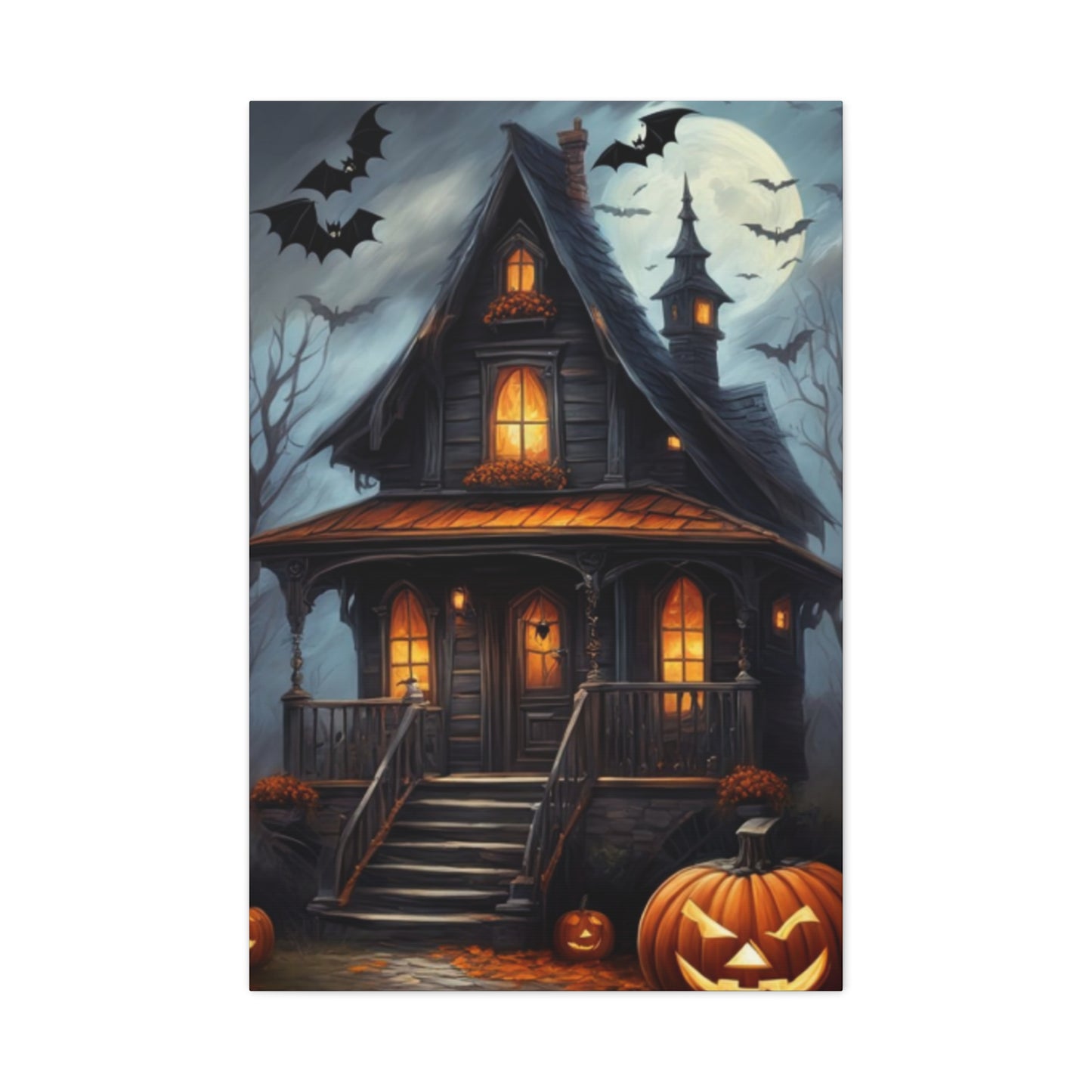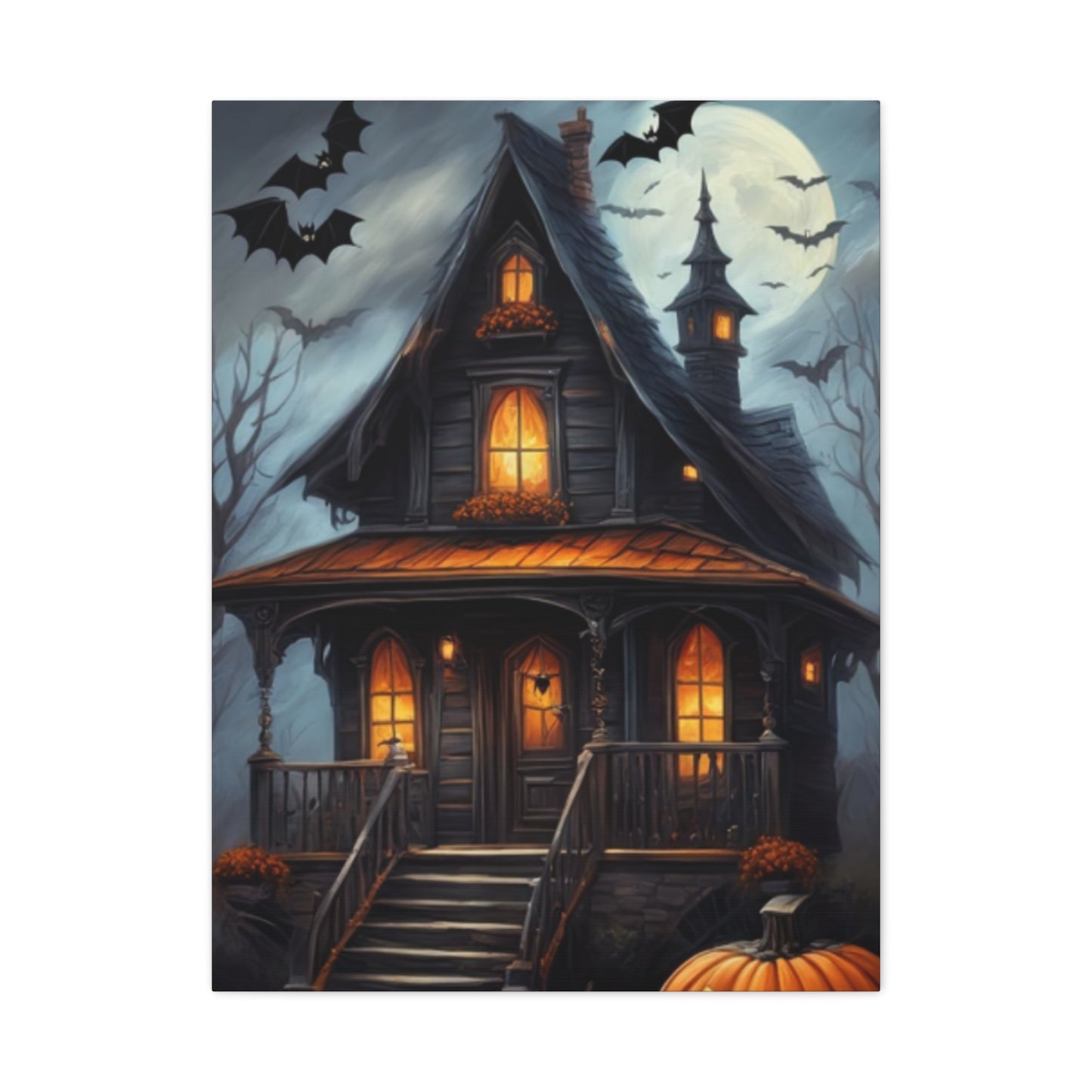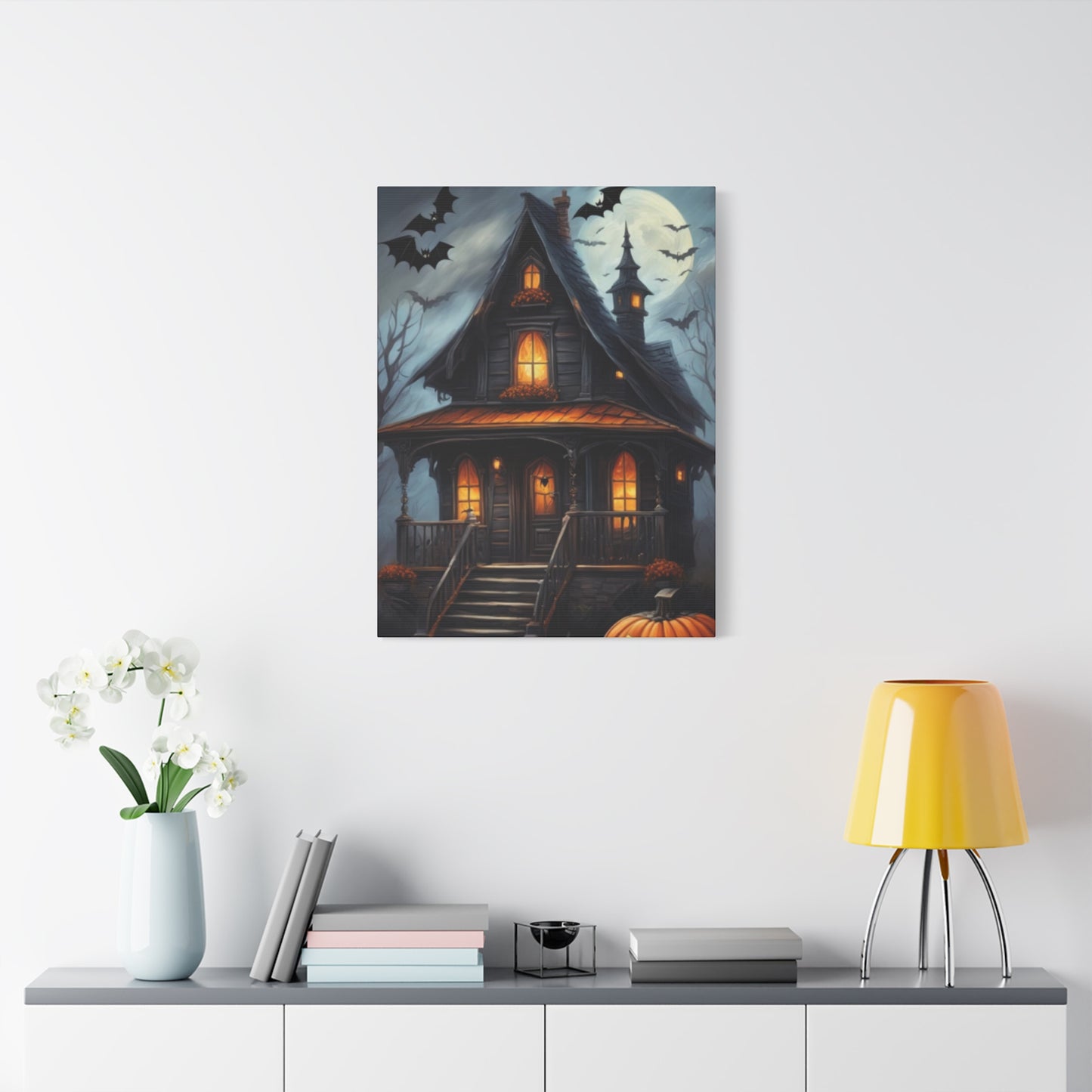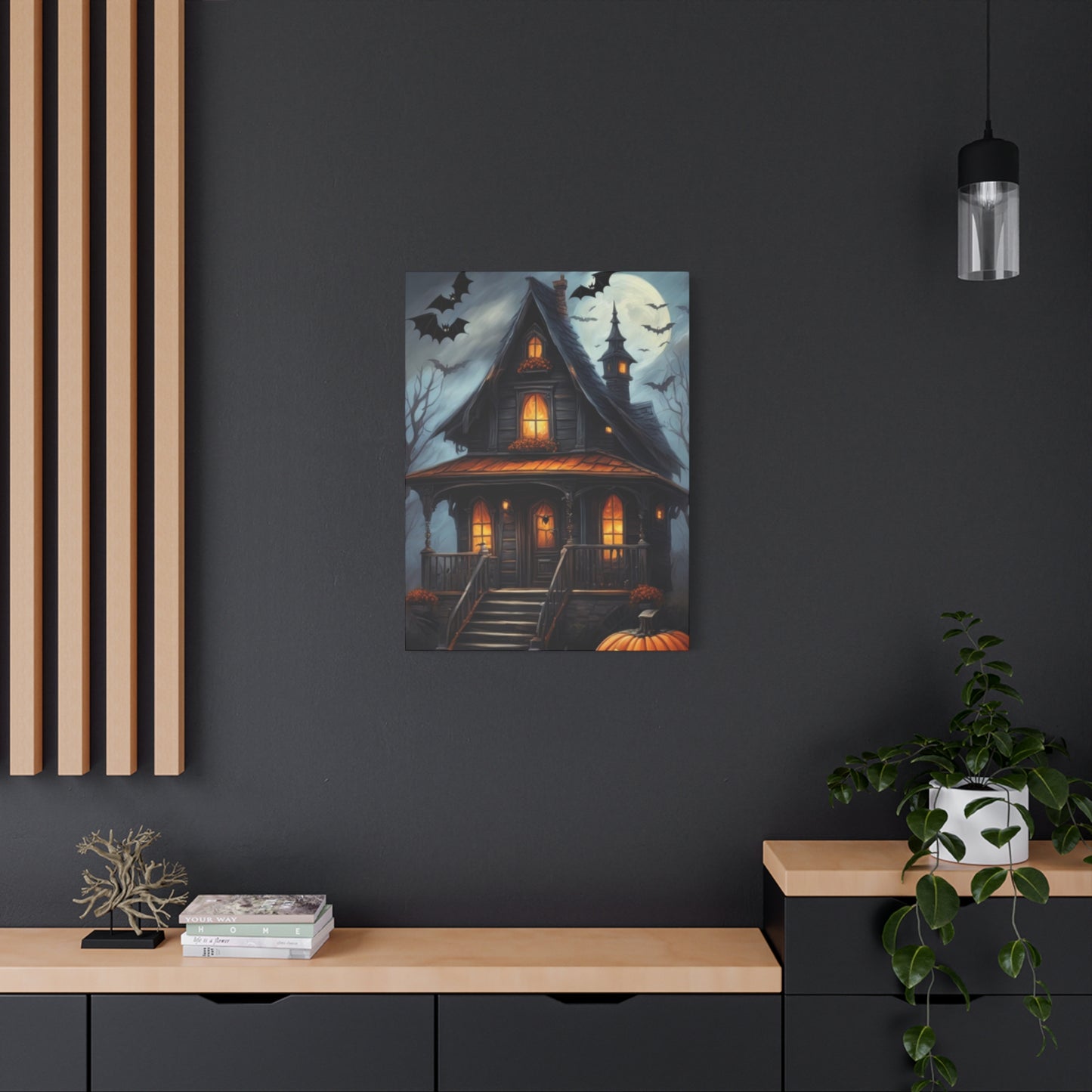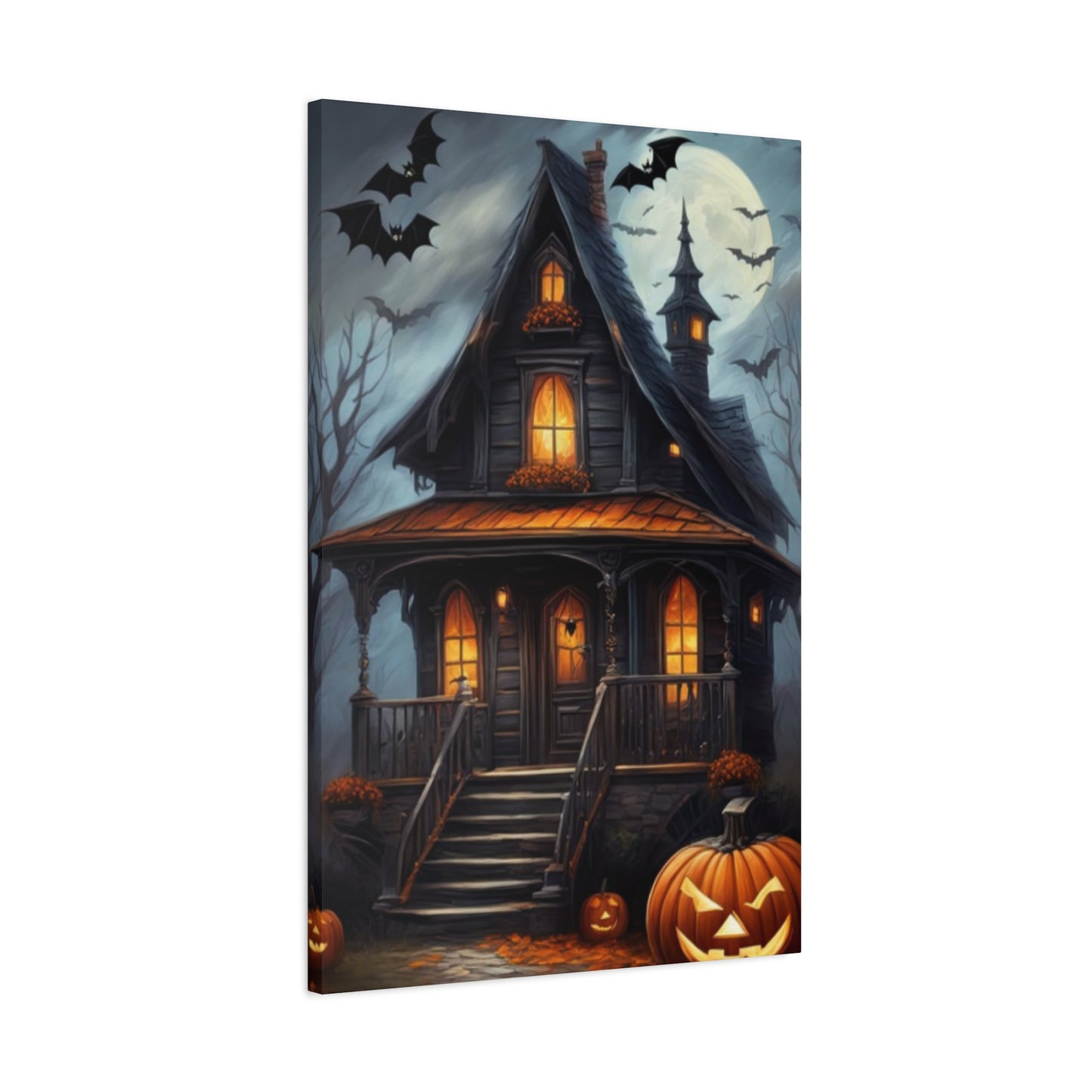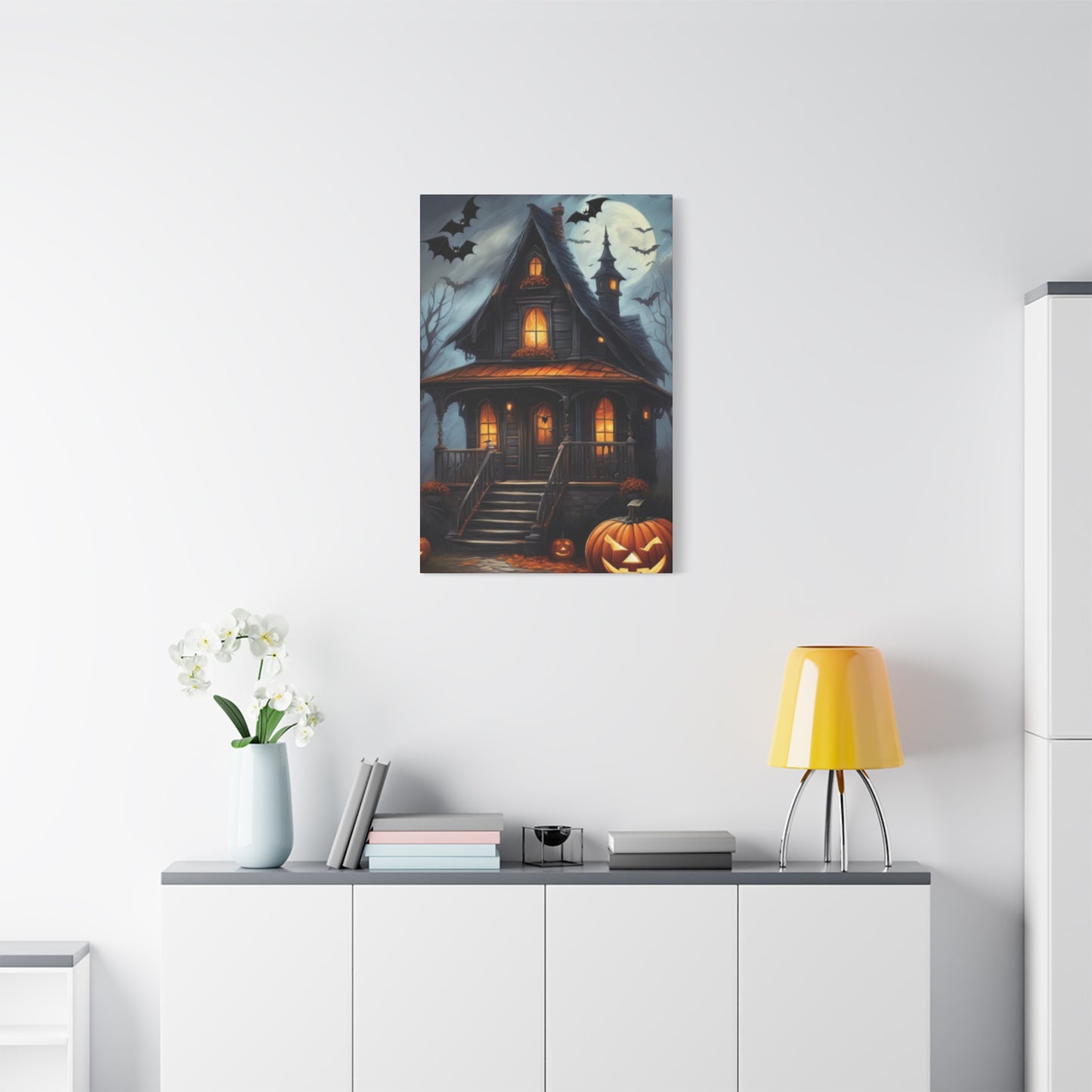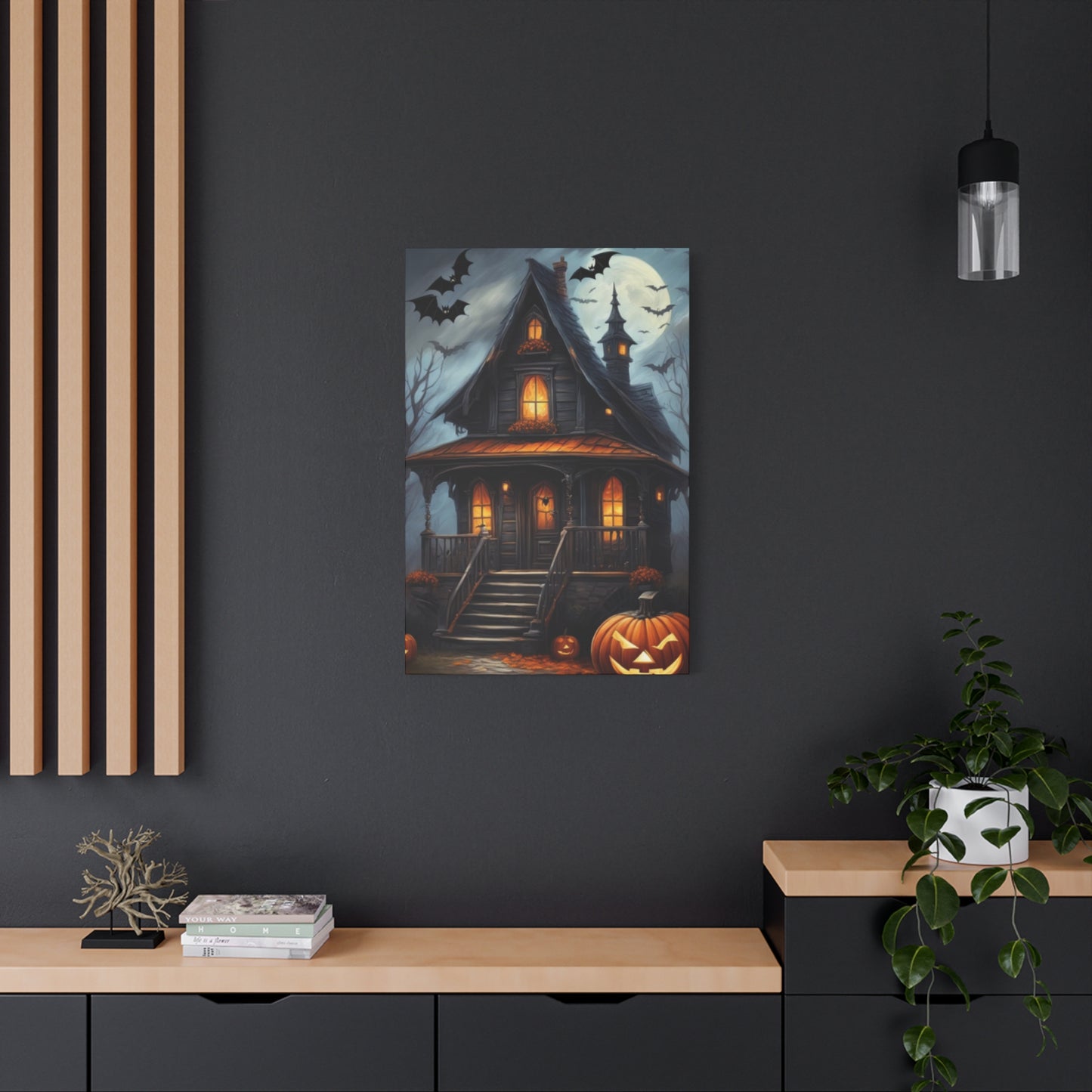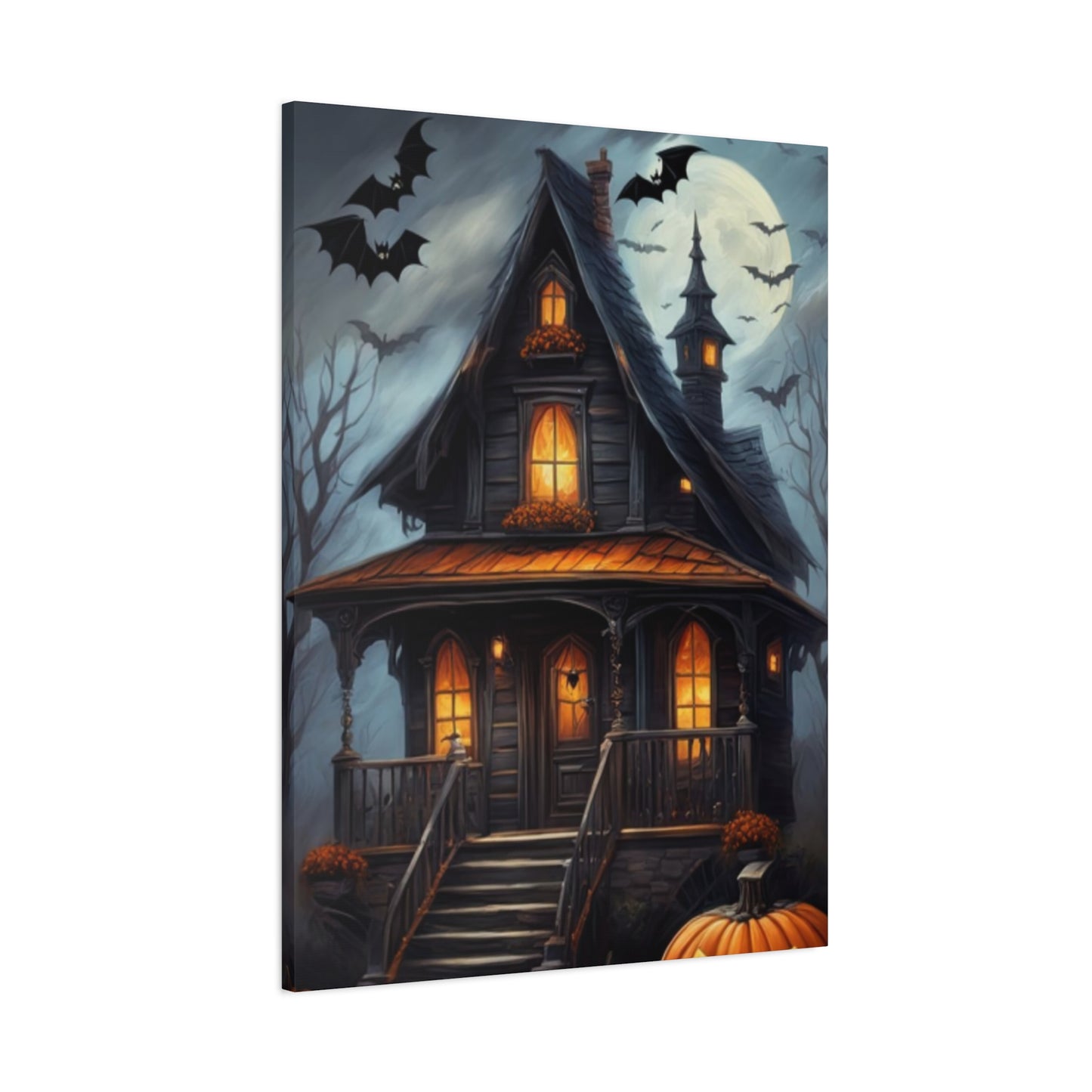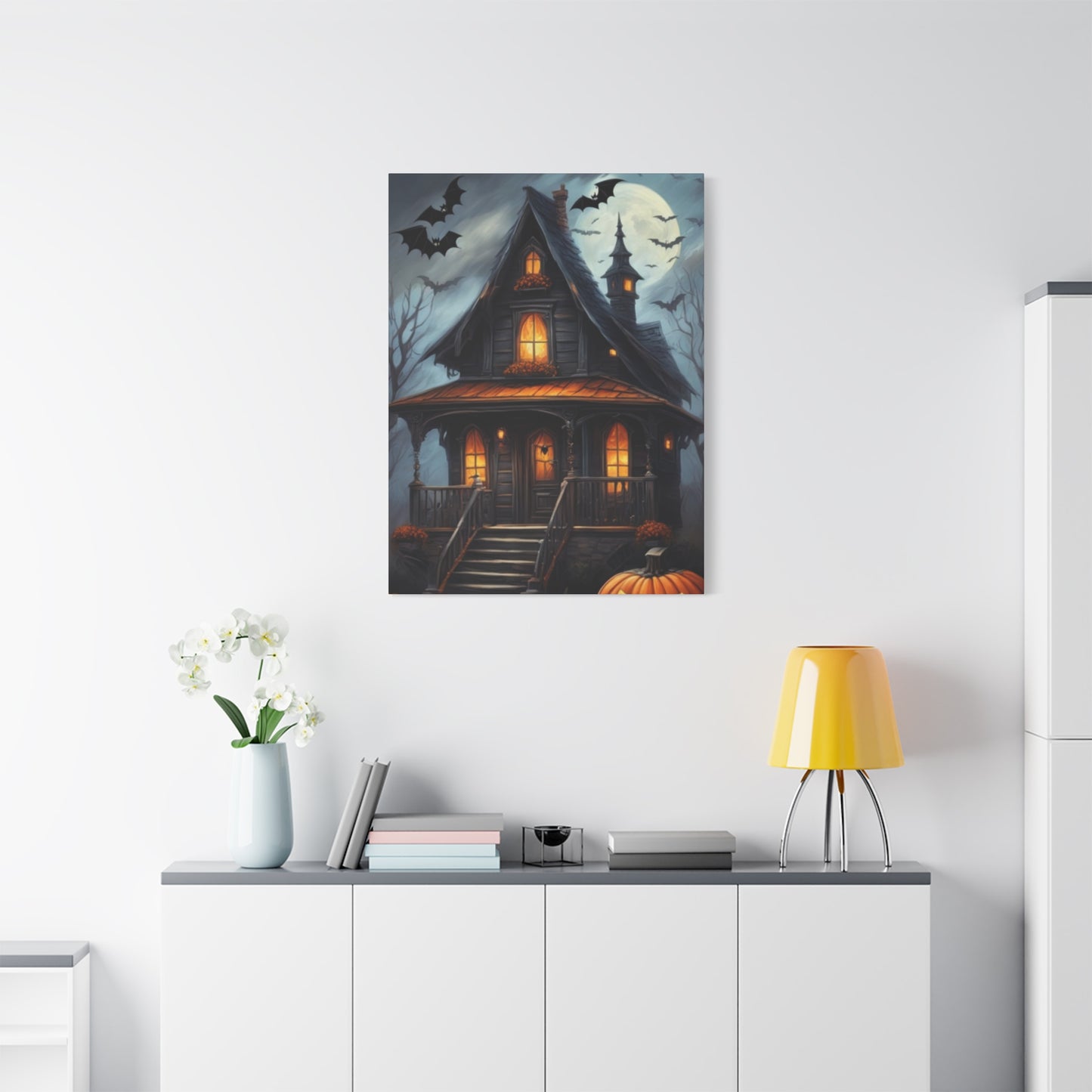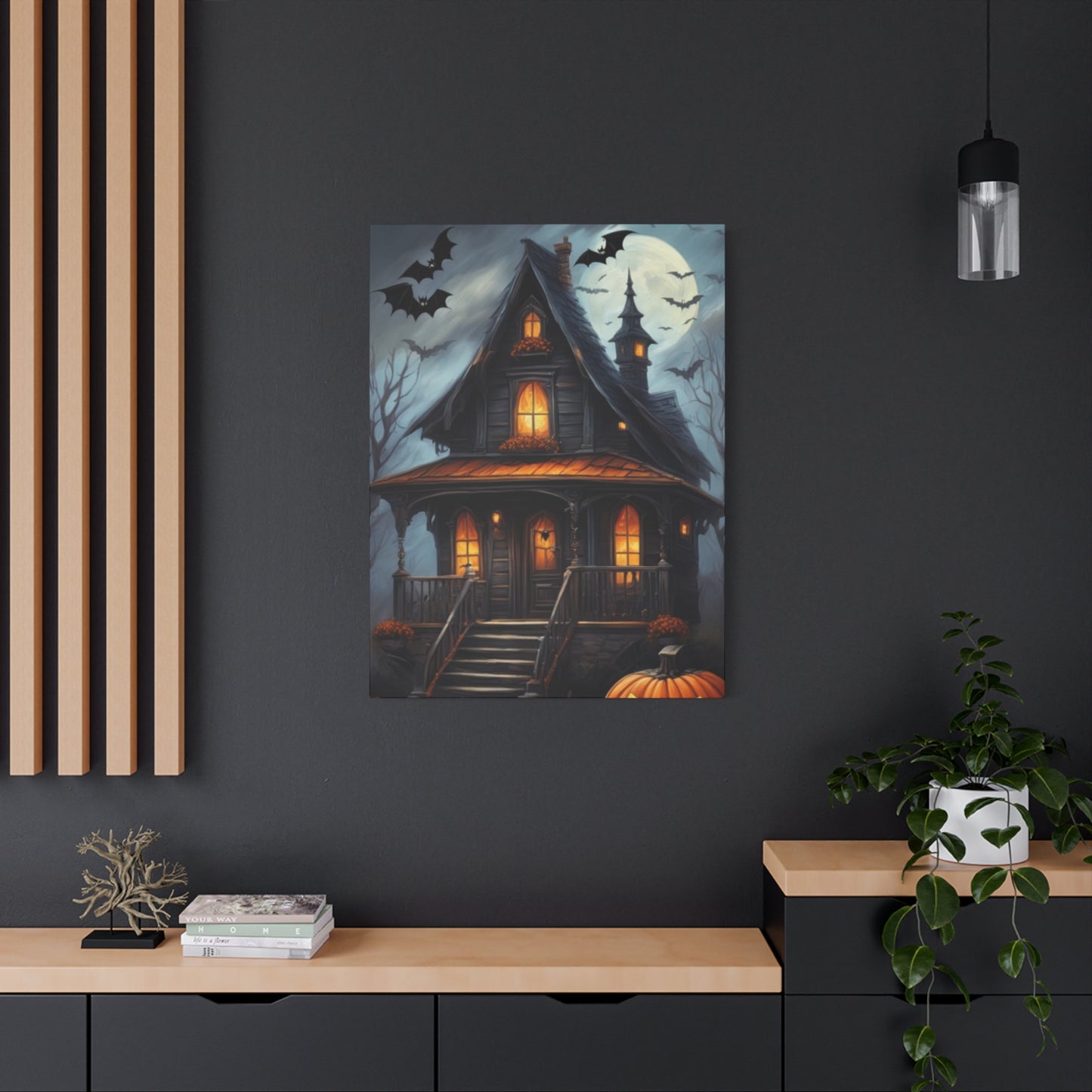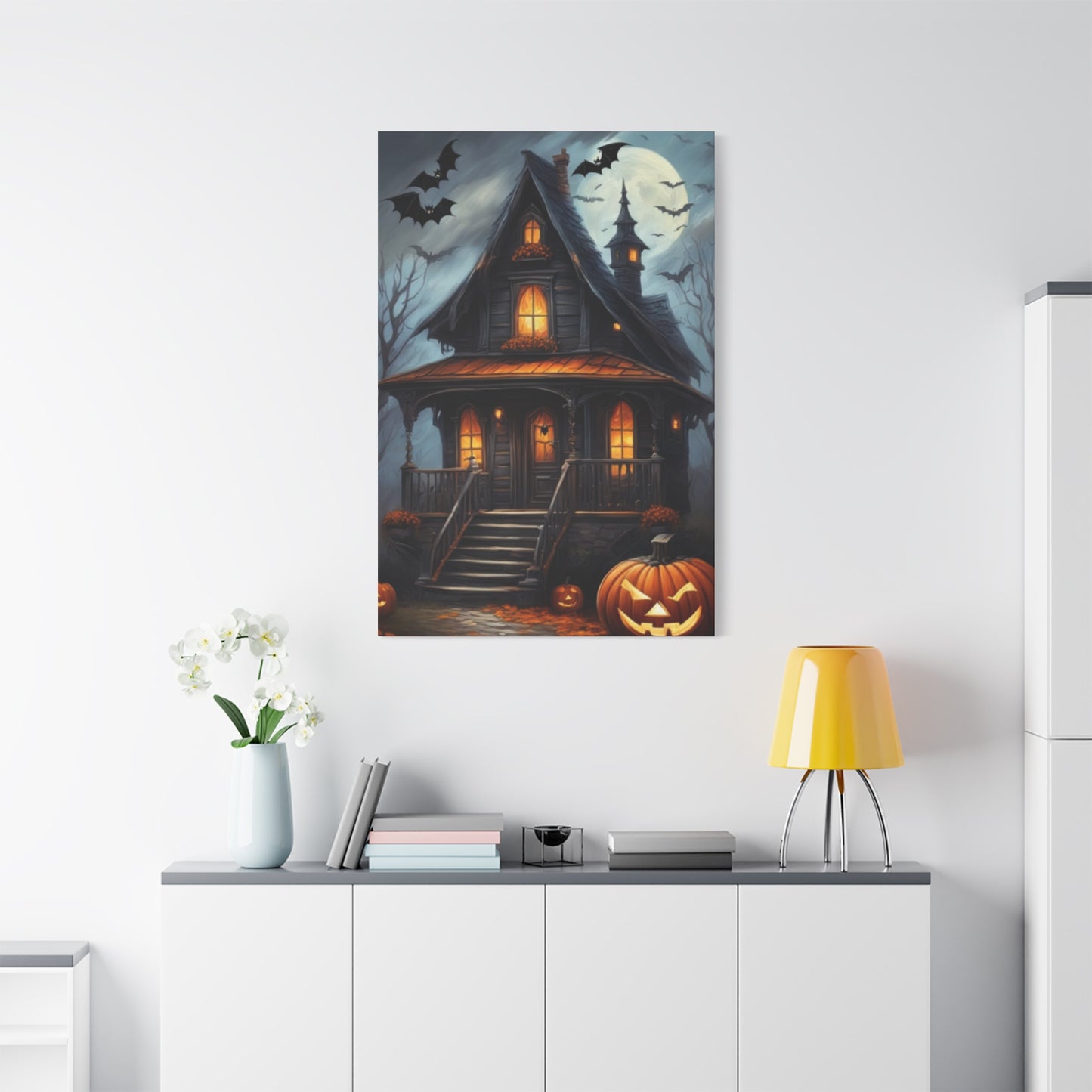Creative Halloween-Themed House Painting Ideas Wall Art and Designs for Your Home
Halloween represents one of the most exciting times of the year when homeowners can express their creativity through festive decorations and artistic expressions. The tradition of decorating homes for this spooky season has evolved significantly, with house painting and wall art becoming increasingly popular methods to showcase holiday spirit. Whether you're looking to create a temporarily haunted atmosphere or permanently display your love for October's most celebrated holiday, this comprehensive exploration will guide you through every aspect of transforming your living space into a Halloween masterpiece.
The Historical Evolution of Halloween Home Decoration Practices
The practice of decorating homes for Halloween traces its roots back centuries, originating from ancient Celtic festivals where people would light bonfires and wear costumes to ward off ghosts. As the tradition migrated across continents and cultures, particularly to North America in the nineteenth century, the custom evolved to include elaborate home decorations. Initially, these decorations consisted primarily of carved pumpkins, corn stalks, and harvest-themed displays. However, as artistic materials became more accessible and homeowners sought increasingly creative outlets, the concept of painting houses and creating wall art specifically for Halloween emerged as a popular tradition.
Throughout the decades, Halloween decoration has transformed from simple paper cutouts and carved vegetables to sophisticated artistic endeavors. The mid-twentieth century saw the introduction of commercial Halloween decorations, which sparked imagination and encouraged homeowners to develop their own unique displays. Artists and creative individuals began experimenting with various painting techniques, temporary wall applications, and removable art installations that could transform ordinary homes into extraordinary seasonal spectacles. This evolution reflects broader cultural shifts toward personalization and self-expression through home decoration.
The contemporary approach to Halloween house painting and wall art represents a fusion of traditional symbolism with modern artistic techniques. Homeowners today have access to an unprecedented range of materials, from washable paints and removable decals to projection systems and digital art applications. This accessibility has democratized Halloween decoration, allowing everyone from novice painters to experienced artists to participate in this festive tradition. The practice has become so widespread that entire neighborhoods now compete to create the most impressive Halloween displays, with house painting and wall art serving as central elements of these community celebrations.
Planning Your Halloween House Painting Project Successfully
Before beginning any Halloween painting project, careful planning ensures successful execution and prevents common pitfalls that might compromise your vision. The planning phase should begin several weeks before Halloween, allowing adequate time for material acquisition, surface preparation, and actual painting. Start by assessing your home's exterior and interior spaces, identifying which areas would benefit most from Halloween-themed decoration. Consider factors such as visibility from the street, natural lighting conditions, weather exposure for exterior projects, and the overall architectural style of your home.
Creating a detailed sketch or digital mockup of your intended design helps visualize the final result and identify potential challenges before you begin painting. This preliminary design work should account for scale, proportion, and color schemes that complement your home's existing features rather than clash with them. Consider photographing your house from various angles and using photo editing software to digitally test different design concepts. This approach allows you to experiment with various ideas without committing to permanent changes and helps communicate your vision to family members or collaborators who might assist with the project.
Budget considerations play a crucial role in planning any house painting project. Determine how much you're willing to invest in materials, tools, and potential professional assistance. Research the costs of different paint types, brushes, stencils, and protective materials to create a realistic budget. Remember to allocate funds for surface preparation materials like cleaning supplies, primer, and painter's tape, as these foundational elements significantly impact the final result. If you're planning an elaborate exterior painting project, factor in costs for scaffolding or ladder rentals to ensure safe access to higher areas of your home.
Timeline management ensures your Halloween decorations are ready for the season while avoiding last-minute stress. Create a project schedule that accounts for weather conditions, drying times between paint layers, and potential setbacks. For exterior projects, monitor weather forecasts and plan painting activities during dry, mild conditions when temperatures fall within the optimal range for paint application. Interior projects offer more flexibility but still require adequate ventilation time, especially when using oil-based paints or products with strong fumes. Build buffer time into your schedule to accommodate unexpected delays or the need to correct mistakes.
Selecting Appropriate Paint Types for Halloween Decorations
Choosing the right paint type is fundamental to achieving durable, vibrant Halloween decorations that withstand environmental conditions and maintain their appearance throughout the season. For exterior house painting projects, weather-resistant paints specifically formulated for outdoor use provide the necessary durability to endure rain, wind, and temperature fluctuations common during autumn months. Acrylic latex paints offer excellent adhesion, flexibility, and UV resistance, making them ideal for exterior Halloween decorations. These water-based formulations dry quickly, emit minimal odors, and clean up easily with soap and water, making them convenient for homeowners undertaking DIY projects.
Temporary and removable paint options have gained popularity among homeowners who want festive Halloween decorations without permanent alterations to their property. Washable tempera paints work excellently for windows and other smooth, non-porous surfaces where decorations will be displayed temporarily. These paints create vibrant, opaque colors that show beautifully against glass and can be removed with simple household cleaners and water. Chalk-based paints provide another temporary option, particularly popular for creating atmospheric effects like aged, weathered appearances on props and decorative elements. The matte finish of chalk paint contributes to an authentic, vintage aesthetic that enhances spooky Halloween themes.
For interior wall art projects, the paint selection process should consider the permanence of your desired design and the room's function. If you're creating a temporary Halloween mural in a child's bedroom or common area, removable wall paints or paint pens designed for temporary application provide vibrant results without long-term commitment. These specialty products often contain pigments suspended in bases that don't fully bond with wall surfaces, allowing removal without damaging underlying paint. Alternatively, traditional interior latex paints work well for homeowners willing to commit to Halloween-themed decor year-round or those planning to repaint after the season.
Specialty effect paints expand creative possibilities for Halloween projects by introducing unique visual elements that standard paints cannot achieve. Glow-in-the-dark paints contain phosphorescent pigments that absorb light during the day and emit an eerie glow after dark, perfect for creating ghostly figures, floating spirits, or mysterious eyes peering from windows. Metallic paints in silver, gold, copper, and bronze add dimension and interest to Halloween designs, particularly when depicting armor on knights, treasure for pirate themes, or otherworldly alien surfaces. Textured paints create dimensional effects that enhance realism in designs featuring stone walls, bark textures, or rough surfaces that add tactile interest to visual displays.
Essential Tools and Materials for Halloween Painting Projects
Assembling the right tools before starting your Halloween painting project prevents frustrating interruptions and ensures professional-quality results. Basic painting supplies include various brush sizes and types suited to different detail levels and surface areas. Flat brushes ranging from one to four inches handle large areas efficiently, while smaller detail brushes with fine points enable precise work on intricate design elements like facial features, text, or delicate decorative flourishes. Foam brushes provide smooth application for base coats and work particularly well with stencils, creating crisp edges and even coverage without brush marks.
Roller systems dramatically accelerate coverage of large surface areas, making them invaluable for base coating exterior walls or creating expansive background murals. Select roller covers with appropriate nap lengths for your surface texture, with shorter naps suitable for smooth surfaces and longer naps better for textured or rough surfaces. Extension poles for rollers eliminate the need for constant ladder repositioning when painting high areas, improving efficiency and safety. Paint trays with liner inserts simplify cleanup and allow quick color changes without washing trays between different paint applications.
Stencils and templates provide reliable methods for reproducing complex designs without advanced artistic skills. Commercial Halloween stencils offer professionally designed images of classic symbols like jack-o'-lanterns, witches, ghosts, bats, and haunted houses in various sizes. Alternatively, creating custom stencils from cardboard, acetate sheets, or adhesive vinyl allows personalized designs tailored to your specific vision. Cutting tools like craft knives, scissors, and rotary cutters help create clean, precise stencil edges. When working with stencils, low-tack painter's tape or repositionable spray adhesive secures them firmly to surfaces, preventing paint bleed while allowing easy removal and repositioning.
Protective equipment and surface preparation materials ensure both painter safety and property protection. Drop cloths or plastic sheeting protect floors, furniture, and landscaping from paint splatter and drips. High-quality painter's tape in various widths creates clean lines and protects adjacent surfaces from accidental paint application. Invest in comfortable, paint-resistant clothing, gloves that allow dexterity while protecting skin, and safety glasses to shield eyes from splatter. For projects involving spray paints or extensive interior work, respiratory protection ranging from disposable dust masks to reusable respirators with appropriate filter cartridges safeguards against inhaling paint fumes and particulates.
Preparing Surfaces for Halloween Painting Applications
Proper surface preparation forms the foundation for any successful painting project, determining both the appearance and longevity of your Halloween decorations. Begin by thoroughly cleaning all surfaces designated for painting, removing dirt, dust, cobwebs, and any other contaminants that might prevent proper paint adhesion. For exterior surfaces, pressure washing offers the most efficient cleaning method, blasting away accumulated grime and revealing the true condition of underlying materials. Allow surfaces to dry completely, typically twenty-four to forty-eight hours after washing, before proceeding with additional preparation or painting.
Inspect surfaces carefully for damage requiring repair before painting. Fill cracks, holes, and gaps with appropriate patching compounds, selecting materials compatible with your surface type. Wood surfaces might require wood filler or exterior spackling, while masonry surfaces need cement-based patching products. Sand repaired areas smooth once dry, feathering edges to blend seamlessly with surrounding surfaces. This attention to detail ensures your Halloween artwork appears on smooth, even surfaces without distracting imperfections that diminish visual impact.
Priming represents a critical preparation step that many novice painters overlook, yet it significantly impacts final results. Primer creates a uniform surface that promotes paint adhesion, seals porous materials to prevent uneven absorption, and provides a consistent base color that allows topcoats to achieve their true hue. For Halloween projects on previously unpainted surfaces or those with existing dark colors, primer is particularly essential. Tinted primers matching your design's dominant color can reduce the number of topcoat layers required, saving time and materials while ensuring complete coverage.
Protection of areas not intended for painting prevents frustrating cleanup and maintains your home's appearance. Apply painter's tape along edges where painted areas meet protected surfaces, pressing firmly to create tight seals that prevent paint seepage. Cover windows, doors, light fixtures, and other features with plastic sheeting secured with tape. For landscape protection during exterior projects, use drop cloths or plastic to shield plants, walkways, and other ground-level features from paint drips. Taking time for thorough masking before painting begins ultimately saves hours of cleanup work and prevents accidental damage to property.
Classic Halloween Color Schemes and Their Psychological Impact
Color selection profoundly influences the mood and effectiveness of Halloween decorations, with certain combinations evoking specific emotional responses that enhance thematic storytelling. The traditional Halloween palette centers on orange and black, a combination that has become synonymous with the holiday through decades of cultural reinforcement. Orange, representing autumn harvests, pumpkins, and flickering candlelight, conveys warmth, excitement, and approachability despite Halloween's spooky themes. Black provides stark contrast, symbolizing darkness, mystery, and the unknown elements central to Halloween's supernatural associations. Together, these colors create visual impact that immediately signals Halloween themes to viewers.
Purple has emerged as a prominent Halloween color, particularly in designs emphasizing magic, mysticism, and otherworldly elements. This regal hue suggests enchantment, sorcery, and the twilight hour when boundaries between natural and supernatural worlds blur. When combined with green, purple creates associations with witches, potions, and magical spells. Green itself carries multiple Halloween connotations depending on shade and context, from the eerie glow of phosphorescent monsters to the toxic appearance of witch's brew or the decayed complexion of zombies and other undead creatures.
Red introduces visceral intensity to Halloween color schemes, particularly in designs featuring vampires, blood, danger, or hellish themes. This powerful color commands attention and triggers primal responses related to both passion and peril. When used judiciously as an accent rather than dominant color, red provides dramatic focal points that draw eyes to specific design elements. Paired with black, red creates classic horror imagery reminiscent of gothic literature and Victorian-era supernatural tales. Combined with orange, red intensifies the fiery, energetic qualities associated with jack-o'-lanterns and autumn celebrations.
Modern Halloween color trends have expanded beyond traditional palettes to include sophisticated combinations that appeal to adult sensibilities while maintaining festive character. Metallics like silver, gold, and copper add elegance and refinement to Halloween displays, particularly popular in upscale neighborhood decorations or adult-oriented party venues. Pastels in lavender, mint green, and pale pink create whimsical, vintage-inspired Halloween aesthetics reminiscent of mid-century holiday decorations. Monochromatic schemes using varying shades of single colors produce cohesive, sophisticated results that demonstrate artistic intentionality while maintaining seasonal appropriateness.
Exterior House Painting Techniques for Halloween Displays
Transforming your home's exterior into a Halloween spectacle requires techniques that balance artistic expression with practical considerations of scale, visibility, and weather resistance. Begin with a cohesive design concept that considers your home's architecture and how Halloween elements can enhance rather than overwhelm existing features. Colonial homes might become haunted mansions with strategic window treatments and doorway decorations, while modern residences could feature sleek, contemporary Halloween graphics that complement clean lines and minimalist aesthetics. The key lies in working with your home's inherent characteristics rather than fighting against them.
Large-scale mural painting on exterior walls creates dramatic visual impact visible from considerable distances, making your home a neighborhood focal point during Halloween season. These ambitious projects typically feature scenes like haunted graveyards, witch silhouettes against full moons, or ghostly figures emerging from walls. Execute these murals using a grid transfer method, dividing your design sketch into proportional sections that correspond to measured sections on the wall. This systematic approach ensures accurate scaling and proper placement of design elements. Work from background to foreground, establishing atmospheric elements like skies and distant features before adding detailed foreground subjects.
Architectural elements offer natural integration points for Halloween painting that enhances rather than conceals your home's character. Window frames painted to resemble broken, aged wood create haunted house atmospherics without obscuring functional elements. Doorways transformed into monster mouths, crypt entrances, or portal frames suggest passage into otherworldly realms beyond. Columns and posts become opportunities for creative treatments like stone textures suggesting ancient ruins, twisted tree bark, or even giant candy canes for homes incorporating whimsical Halloween candy themes alongside traditional spooky elements.
Projection and shadow techniques represent innovative approaches to exterior decoration that create dynamic, changeable displays without permanent alterations. While not strictly painting, these methods can work in conjunction with painted elements to produce multilayered effects. Paint base imagery on walls that serves as foundation for projected animations, creating sophisticated displays where static painted elements interact with moving projected components. Shadow paintings, created by illuminating strategically shaped objects to cast specific shadows onto painted backgrounds, produce three-dimensional effects that shift throughout evening hours as light angles change.
Interior Wall Art Concepts for Halloween Ambiance
Interior Halloween wall art allows more intimate, detailed artistic expression than large-scale exterior projects while creating immersive environments within your home. Accent walls featuring Halloween murals transform ordinary rooms into themed spaces that delight both residents and visitors. Consider painting one wall in a family room or entertainment area with a haunted forest scene, complete with gnarled trees, mysterious fog, and hidden creatures peering from shadows. This approach provides dramatic impact while maintaining livability by keeping remaining walls in neutral tones that balance the bold statement wall.
Temporary wall decals and removable paint applications offer flexibility for those reluctant to commit to permanent Halloween decor or living in rental properties. Paint directly onto removable wallpaper sheets or large vinyl decals using appropriate paints, creating custom artwork that adheres to walls without damage. These removable canvases allow intricate, professional-quality paintings that can be rolled and stored after Halloween, then reinstalled in subsequent years. This technique also enables experimentation with different designs each year without repeatedly repainting walls or risking security deposits.
Hallways present unique opportunities for progressive storytelling through sequential wall paintings that guide visitors through narrative experiences. Create a series of connected scenes that unfold as one walks through the corridor, perhaps depicting a journey through a haunted mansion with each section revealing a different room or supernatural encounter. This approach transforms functional transitional spaces into active components of your Halloween decoration scheme. Scale and positioning become particularly important in hallways, as viewers experience artwork from close proximity and specific directional angles rather than the variable distances possible in larger rooms.
Children's spaces deserve special consideration when planning interior Halloween wall art, balancing festive themes with age-appropriate imagery that inspires rather than frightens. Friendly ghost families, cartoon witches, playful monsters, and whimsical pumpkin patches create Halloween atmosphere without inducing nightmares. Incorporate interactive elements like chalkboard paint sections where children can draw their own Halloween characters or glow-in-the-dark elements that provide comforting night lights. These thoughtful touches demonstrate how Halloween decoration can be fun and celebratory rather than exclusively scary, fostering positive associations with the holiday that persist throughout childhood.
Creating Realistic Texture Effects in Halloween Paintings
Texture transforms flat painted surfaces into dimensional artworks that engage multiple senses and create convincing illusions. For Halloween projects, textured painting techniques replicate materials like aged wood, cracked stone, rusted metal, and decaying surfaces that enhance spooky atmospheres. Build texture using several methods depending on desired effects and available materials. Thick paint applications, achieved through impasto techniques using brushes or palette knives, create actual raised surfaces that cast tiny shadows and catch light variably, producing organic, naturalistic appearances.
Additive texturing incorporates foreign materials into paint to alter its consistency and finished appearance. Mix fine sand into exterior paint to create gritty, stone-like surfaces perfect for painting dungeon walls or ancient crypts. Sawdust additions produce wood-grain effects useful for weathered fence or door paintings. Joint compound or texture medium, available at home improvement stores, combines with acrylic paint to create heavy-bodied mixtures suitable for sculpting dimensional effects directly on walls. These thick applications can be manipulated while wet using various tools to create specific patterns, then painted once dry to achieve desired final colors.
Faux finishing techniques borrowed from decorative painting disciplines create convincing material illusions using only paint and standard tools. Sponging produces mottled, organic patterns suggesting aged plaster, weathered stone, or mysterious atmospheric effects. Load natural sea sponges with paint and dab onto surfaces in random patterns, varying pressure and color to build complex, layered appearances. Rag rolling creates similar effects with different character, producing directional patterns suitable for suggesting wood grain or flowing ghostly apparitions. Crumple soft cloth, dip in paint, and roll across surfaces to deposit irregular patterns.
Aging and distressing techniques make new paintings appear old and weathered, essential for authentic haunted house aesthetics. Apply base colors, then add layers of lighter and darker tones in strategic locations using dry-brush techniques where minimal paint on nearly dry brushes deposits subtle color variations. Focus wear patterns on edges, corners, and areas that would naturally experience more handling or weather exposure. Add cracks using thin lines in contrasting colors, radiating from central points in patterns resembling real material failure. Stipple darker colors into recessed areas and along crack lines to suggest accumulated dirt and age, building convincing antiquity through careful observation of real weathering patterns.
Stenciling Techniques for Precise Halloween Imagery
Stenciling provides reliable methods for reproducing crisp, professional-looking designs without requiring advanced freehand painting skills. This technique particularly benefits those decorating multiple surfaces with repeated motifs or creating symmetrical designs where consistency is essential. Select or create stencils appropriate for your project scale, with simpler designs featuring larger openings working better for rough surfaces while intricate stencils with fine details suit smooth applications. Secure stencils firmly against painting surfaces using low-tack painter's tape or repositionable spray adhesive, ensuring tight contact that prevents paint bleeding under edges.
Loading brushes correctly prevents common stenciling problems like paint seepage and blurred edges. Use stencil brushes with short, stiff bristles cut flat across their ends, or dense foam dabbers designed specifically for stenciling. Dip brush tips into paint, then remove excess by dabbing onto paper towels until the brush appears nearly dry. This counterintuitive technique of using minimal paint produces the cleanest results. Apply paint through stencil openings using straight up-and-down pouncing motions rather than traditional brushing strokes, building color gradually through multiple light applications rather than attempting full coverage in single heavy coats.
Layered stenciling creates complex, multicolored designs by using multiple stencils in sequence. This technique works particularly well for Halloween imagery requiring dimensional shading and varied color areas, such as detailed jack-o'-lantern faces or elaborate witch silhouettes. Plan layering sequence carefully, typically working from lightest to darkest colors or from background elements to foreground details. Allow each layer to dry completely before positioning subsequent stencils to prevent smudging and ensure clean registration. Mark registration points on both stencils and surfaces using pencil to achieve proper alignment when applying multiple layers.
Custom stencil creation expands design possibilities beyond commercial offerings, allowing personalized Halloween imagery unique to your home. Trace or draw designs onto stencil material, which can include traditional stencil plastic, acetate sheets, cardboard for single-use applications, or adhesive vinyl for projects requiring strong surface adhesion. Cut designs carefully using sharp craft knives, rotating material rather than blade when navigating curves to maintain smooth edges. Create bridges connecting isolated internal elements to surrounding stencil material, ensuring these supporting structures remain in place while allowing paint through design openings. These connecting bridges become incorporated into the final design, so position them thoughtfully where they'll appear intentional rather than disruptive.
Illumination Strategies for Nighttime Halloween Painting Impact
Lighting considerations dramatically affect how Halloween house paintings appear after dark, the prime viewing time when trick-or-treaters and evening visitors experience your decorations. Plan lighting strategies during the design phase rather than as afterthoughts, considering how artificial illumination will interact with painted elements to create desired atmospheres. Uplighting placed at ground level and directed upward produces dramatic, somewhat eerie effects by casting unusual shadows and illuminating subjects from unexpected angles. Position uplights at the base of painted walls to highlight murals while creating mysterious shadow play that enhances supernatural themes.
Colored lighting transforms painted decorations through chromatic interaction, intensifying certain hues while suppressing others. Orange or amber lights warm Halloween scenes, making orange pumpkins glow vibrantly while enhancing fire and candlelight painted elements. Purple lights create mystical, otherworldly atmospheres that emphasize magical themes and make certain fluorescent paints fluoresce dramatically. Green lighting produces toxic, eerie effects particularly effective for zombie scenes, witch elements, or radioactive themes. Experiment with colored LED bulbs or gels over white lights, testing different combinations to discover which best complement your specific painted designs.
Blacklight illumination creates stunning effects when used with fluorescent paints invisible under normal lighting but glowing brilliantly under ultraviolet radiation. Paint hidden designs or accents using fluorescent paints during your initial project, positioning them strategically throughout your Halloween display. When blacklights activate after dark, these previously invisible elements appear magically, creating dynamic displays that transform as lighting changes. This technique works exceptionally well for ghost figures, supernatural energy effects, mysterious text messages, and hidden creatures that reveal themselves only after nightfall, adding interactive discovery elements to your decorations.
Motion-activated lighting adds interactive components that surprise and delight visitors while conserving energy. Connect lights to motion sensors positioned to detect approaching trick-or-treaters or guests, triggering illumination that highlights specific painted elements at optimal moments. This technique creates theatrical reveals, perhaps illuminating a painted monster face as visitors approach or casting strategic shadows that animate static paintings. Program or position lights to create sequences, perhaps starting with dim ambient lighting that intensifies as visitors approach, building dramatic tension before final reveals.
Incorporating Three-Dimensional Elements with Painted Backgrounds
Combining painted backgrounds with dimensional props creates layered displays more engaging than either element alone. This integration technique produces convincing scenes with enhanced depth perception and physical presence. Paint backdrop murals featuring distant elements like haunted mansion facades, forest backgrounds, or cemetery landscapes, then position three-dimensional foreground props like tombstones, fencing, or standing figures. Ensure painted background and physical props share consistent lighting direction, color palettes, and stylistic approaches to maintain visual cohesion. This attention to detail convinces viewers that flat and dimensional elements inhabit the same unified scene rather than appearing as unrelated components.
Shadow painting represents a sophisticated technique that blurs boundaries between two-dimensional artwork and three-dimensional props. Paint shadows as if cast by dimensional objects, extending from their bases in directions consistent with your lighting design. These painted shadows enhance depth perception and ground dimensional props visually, making them appear more firmly anchored in their environments. Take this concept further by painting shadows of objects not physically present, suggesting unseen creatures or figures lurking just out of frame, heightening mysterious atmospheres through viewers' imaginations filling gaps.
Forced perspective painting creates convincing three-dimensional illusions on flat surfaces, a technique particularly effective for Halloween applications like false doorways leading to impossibly deep crypts or windows revealing vast spaces beyond exterior walls. Execute forced perspective through systematic distortion of proportions, making distant elements proportionally smaller and reducing spacing between objects as they recede. Converging parallel lines toward vanishing points creates railroad track effects where walls, floor boards, or ceiling beams appear to extend into distance. Master this technique through study and practice, perhaps testing concepts on poster board before committing to large-scale wall applications.
Interactive dimensional elements invite physical engagement that enhances visitor experiences beyond passive observation. Paint mailboxes to resemble monster mouths, then position them so candy deposits appear to feed creatures. Create painted window scenes with attached shutters visitors can open to reveal surprises. Design painted game boards on walkways or walls where visitors interact with dimensional playing pieces, transforming Halloween decorating into participatory art. These creative integrations demonstrate how thoughtful combination of painting and dimensional construction produces results greater than sum of individual components.
Safety Considerations for Halloween House Painting Projects
Safety must remain paramount throughout all house painting projects, protecting both decorators during creation and visitors during display. Ladder safety is particularly critical for exterior projects requiring elevation work. Select ladders appropriate for required heights, ensuring they extend at least three feet above work surfaces for safe mounting and dismounting. Position ladders on firm, level ground, maintaining proper angle where base distance from wall equals one-quarter of ladder height. Never overreach while on ladders, instead descending and repositioning frequently. Consider scaffolding rental for extensive projects requiring prolonged elevated work, as these systems provide stable platforms with greater working surfaces than ladders.
Chemical safety involves proper handling, application, and disposal of paint and related products. Work in well-ventilated areas when using solvent-based paints, opening windows and using fans to ensure adequate air circulation. Wear appropriate respiratory protection for spray painting or working with products emitting strong fumes, selecting respirators with cartridges rated for organic vapors. Protect skin through long sleeves, pants, and chemical-resistant gloves, preventing contact with potentially irritating substances. Eye protection guards against splashes and spray drift. Read all product safety data sheets before use, following manufacturer recommendations for safe handling and emergency procedures.
Fire safety considerations apply particularly when using flammable materials or incorporating lighting elements into displays. Store paint, solvents, and soaked rags properly, disposing of oil-soaked materials according to local regulations to prevent spontaneous combustion. Keep all paint products away from heat sources, pilot lights, and open flames. When incorporating lighting into displays, use appropriate exterior-rated fixtures for outdoor applications, ensuring all electrical connections remain dry and protected from weather. Never overload electrical circuits, and consider using LED lighting which generates minimal heat compared to incandescent alternatives, reducing fire risks when lights contact painted surfaces or other materials.
Family safety, especially regarding children and pets, requires special attention during both decoration installation and display periods. Keep paint, solvents, and tools securely stored and inaccessible to children when not in active use. Choose low-VOC or zero-VOC paints for interior projects, minimizing exposure to potentially harmful fumes. Ensure all painted surfaces have fully cured before allowing children or pets contact, as wet paint can cause skin irritation and poses ingestion risks. Design displays with rounded edges rather than sharp points, securing all dimensional elements firmly to prevent tipping. Avoid creating trip hazards through careful prop placement and adequate pathway lighting.
Weather-Resistant Finishes for Long-Lasting Exterior Decorations
Protecting exterior Halloween paintings from weather damage ensures your artistic efforts remain vibrant throughout the season despite autumn's often challenging conditions. Clear protective coatings provide transparent barriers that shield painted surfaces from rain, moisture, and UV radiation while maintaining the visual appearance of underlying artwork. Select exterior-grade polyurethane, polycrylic, or specialized mural sealers formulated for outdoor use. These products come in various sheens from matte to glossy, each affecting final appearance differently. Matte finishes maintain the original painted appearance most faithfully while glossy coatings add protective strength at the cost of introducing reflective surfaces that might create viewing difficulties from certain angles.
Application techniques for protective coatings significantly impact their effectiveness and appearance. Allow base paintings to cure fully according to paint manufacturer recommendations, typically twenty-four to forty-eight hours minimum, though some paints benefit from longer curing periods before sealing. Apply sealers in thin, even coats using appropriate tools for product type; brushes work well for small areas and details while rollers efficiently cover larger surfaces. Spray applications produce very smooth finishes without brush marks but require careful masking and ventilation. Multiple thin coats provide superior protection compared to single thick applications, allowing proper drying between coats and building durable barrier layers.
Anti-graffiti coatings represent an advanced protection option particularly valuable for street-facing decorations in areas where vandalism concerns exist. These specialized products create sacrificial barrier layers that accept spray paint, markers, and other graffiti media while preventing penetration to underlying artwork. If vandalism occurs, special cleaning solutions remove graffiti from anti-graffiti coatings without damaging protected artwork beneath. While adding expense and extra steps to projects, this protection proves valuable for elaborate, time-intensive murals displayed in public-facing locations where tampering risks exist.
Maintenance schedules extend decoration longevity through preventive care during display periods. Inspect painted surfaces regularly for signs of wear, damage, or coating failure. Address any issues promptly before minor problems escalate into significant damage requiring extensive repair. Gently rinse surfaces with water to remove accumulated dust and debris that can trap moisture against paint. After Halloween concludes, clean surfaces thoroughly before applying touch-up paint or additional sealer coats to damaged areas, preparing decorations for storage or protecting permanent installations through winter. This proactive approach to maintenance preserves your artistic investment far beyond single-season use.
Child-Friendly Halloween Painting Projects and Activities
Involving children in Halloween house painting projects creates memorable family experiences while teaching valuable skills and fostering creativity. Design age-appropriate activities that engage young participants meaningfully without frustration or safety concerns. Simple stenciling projects allow children to create recognizable Halloween imagery successfully regardless of freehand drawing abilities. Provide pre-cut stencils featuring friendly pumpkins, smiling ghosts, or cartoon bats along with washable paints and supervision, allowing children to decorate windows, poster boards, or designated wall sections. This structured creativity builds confidence and produces satisfying results that children can proudly claim as their contributions.
Hand and footprint art incorporates children directly into decoration creation through natural stamps. Transform handprints into ghosts by printing in white paint, then adding eyes and mouths once dry. Footprints become monsters, bats, or other creatures through creative paint additions. These personalized decorations carry special meaning as they capture children at specific developmental stages, creating keepsakes parents treasure beyond Halloween season. Arrange multiple prints into larger compositions, perhaps creating ghostly families or monster parades that show how individual contributions combine into impressive collective artworks.
Collaborative mural projects teach teamwork and shared creative vision while producing large-scale artworks no individual could complete alone. Sketch mural outlines using projectors or grid methods, then assign different sections to family members based on skill levels and interests. Children might paint designated background areas, fill in large color fields, or add specific elements matching their abilities. Adults can handle detailed work, complex shading, and refinement while children focus on aspects appropriate for their developmental stages. This division of labor ensures everyone contributes meaningfully regardless of age or experience while maintaining quality standards for finished products.
Educational components transform decorating activities into learning opportunities. Discuss color theory while mixing paints, explaining how primary colors combine to create secondaries and how adding white or black alters value. Explore symmetry and pattern through repeating design elements. Introduce basic perspective concepts when arranging compositions. Research Halloween history and symbolism together, incorporating learned elements into decoration designs. These educational threads enrich activities beyond simple craft projects, promoting cognitive development alongside creative expression and making decorating time valuable learning experiences.
Budget-Conscious Approaches to Halloween House Painting
Creating impressive Halloween displays need not require substantial financial investment when approaching projects with resourcefulness and creativity. Many effective techniques rely more on imagination and effort than expensive materials. Substitute premium art supplies with more affordable alternatives suitable for temporary seasonal decorations. Craft paints from hobby stores cost significantly less than artist-grade paints while providing adequate quality for most Halloween applications. Household items serve as effective painting tools, with kitchen sponges replacing expensive specialty sponges, old rags providing texturing tools, and plastic grocery bags creating interesting marbled effects when crumpled and used for paint application.
Reclaimed and repurposed materials offer free or low-cost options for many project components. Cardboard boxes break down into large flat surfaces perfect for creating portable paintings, life-size character cutouts, or dimensional scenic elements. Old bedsheets become reusable canvases for painted banners and backdrop murals. Leftover house paint from other projects, even in colors that don't seem Halloween-appropriate, can be mixed to create custom shades or used as bases under translucent layers of more expensive colors, extending their coverage. Scrap lumber provides frames, supports, and dimensional structural elements. This resourceful approach reduces costs while introducing creative problem-solving aspects that enhance overall project satisfaction.
Strategic focus on high-impact elements maximizes decorative effect per dollar spent. Rather than attempting to decorate every surface, concentrate resources on key areas visible from primary viewing locations. A single impressive front door treatment creates more impact than scattered decorations throughout the entire property. One sophisticated window painting viewed from the street proves more effective than multiple mediocre efforts on less visible surfaces. Identify your home's focal points, then allocate majority resources there while using minimal decorations to support and direct attention toward these star attractions.
Community resource sharing spreads costs among multiple families while introducing social elements to Halloween preparation. Organize neighborhood tool and supply libraries where families contribute and share ladders, paint sprayers, stencils, and other items used infrequently. Coordinate group purchases of commonly needed items, buying in bulk to achieve volume discounts. Share leftover paint from completed projects with neighbors beginning similar efforts, preventing waste while helping others. Exchange skills and labor, with artistically inclined individuals assisting neighbors with design work in return for help with physical labor aspects like surface preparation or cleanup. These collaborative approaches build community connections while reducing individual financial burdens.
Conclusion
Halloween is a time when creativity, imagination, and festive spirit come alive, and Halloween-themed house painting ideas and wall art allow you to bring that energy directly into your home. From whimsical pumpkins to mysterious haunted houses, spooky silhouettes, and playful ghost motifs, these creative designs transform ordinary walls into immersive seasonal experiences. Incorporating Halloween-inspired artwork elevates your décor, turning your living space into a celebration of fun, artistry, and festive expression.
What makes Halloween wall art so compelling is its ability to combine creativity with emotional engagement. Bold colors, intricate patterns, and imaginative imagery evoke both excitement and a sense of wonder. Whether through detailed paintings of eerie landscapes, minimalistic pumpkin illustrations, or stylized haunted house murals, each piece captures the essence of the season while offering a unique storytelling element. The artwork becomes a conversation starter, sparking joy, curiosity, and festive enthusiasm among family, friends, and visitors.
The versatility of Halloween-themed art allows it to complement a wide range of home styles. In modern or minimalist interiors, a single striking mural or monochromatic illustration can add a festive accent without overwhelming the space. In eclectic or traditional homes, vibrant wall paintings, themed gallery walls, or creative decals can create an immersive seasonal environment, blending seamlessly with existing décor. Even subtle touches, such as framed Halloween prints or pumpkin-inspired designs, infuse your home with a playful and spirited atmosphere, proving that holiday art does not require drastic changes to transform a space.
Color, composition, and theme are key to creating impactful Halloween art. Rich oranges, deep purples, and muted blacks instantly convey the holiday’s iconic palette, while pops of metallic gold, silver, or green add depth and visual interest. Playful designs can balance spooky elements with cheerful motifs, ensuring that the space remains inviting rather than intimidating. Thoughtful placement of focal points, whether a central wall mural or a series of smaller decorative pieces, creates rhythm and narrative flow, drawing attention and guiding viewers through the festive environment.
Lighting enhances the dramatic and whimsical effect of Halloween wall art. Soft ambient lighting can create an eerie glow that highlights shadows and textures, adding mystery and depth to your designs. Accent lights or strategically placed lamps can emphasize key elements like carved pumpkins, bats, or ghostly figures, transforming ordinary walls into cinematic, festive displays. This interplay of light, shadow, and color brings the artwork to life, making your home feel as immersive and magical as a Halloween night itself.
Beyond aesthetics, Halloween-themed wall art engages the imagination and fosters creativity. Designing and displaying seasonal artwork encourages playful experimentation with colors, textures, and storytelling. For families, it becomes a shared activity that promotes collaboration and enjoyment, while for individuals, it offers a chance to showcase artistic skills and personal style. Incorporating themed art into your décor also strengthens the emotional connection to the holiday, heightening anticipation and celebration.
Decoratively, Halloween art allows for flexible arrangements. Large murals can act as statement pieces, transforming a room’s ambiance instantly. Smaller framed prints or vinyl decals can be arranged in creative clusters to maintain variety and visual interest. Complementing the artwork with thematic accents, such as pumpkin sculptures, garlands, or decorative lights, enhances the seasonal feel while maintaining a cohesive and stylish look.
Ultimately, creative Halloween-themed house painting ideas and wall art do more than decorate—they transform spaces into festive experiences that celebrate imagination, artistry, and the joy of seasonal traditions. Each piece captures the essence of Halloween, whether through spooky charm, playful motifs, or atmospheric design, creating a home environment that delights, inspires, and immerses all who enter.


















